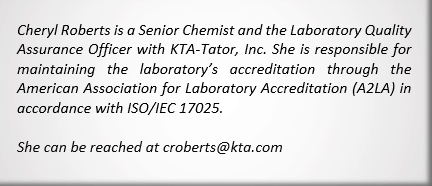Background
The gloss level of a coating is selected primarily for aesthetics. Choices can range from flat to egg shell, satin, semi-gloss and gloss. Industrial protective coatings are not always available in each of these five levels. The gloss of a protective coating changes over time; these changes may be caused by aging of the coating and/or exposure to solar radiation (ultraviolet light) from the sun. Finish coats designed for exterior use are typically formulated with light stabilizers so that the gloss retention is maximized. Polyurethane, polysiloxane, and fluorourethane resin systems tend to retain their gloss longer than vinyl, alkyd, acrylic latex, epoxy and other resin types, but are also significantly more costly. Changes in gloss more than about 5 G.U. (gloss units) can be detected by the human eye, but minor reductions in gloss and/or the need to quantify the change in gloss can only be determined using gloss meters. This brief introduction to gloss measurement describes the technology behind measuring changes in gloss and calculating gloss retention.
ASTM D523 Standard Test Method for Specular Gloss describes the procedures for measuring gloss of nonmetallic specimens at 20°, 60°, and 85°.
Which angle(s) – 20°, 60°, and/or 85°?
The reason gloss is measured using 3 different geometries, 20°, 60°, and 85°, is to provide clear differentiation from low gloss to high gloss levels. The angle recommended for measurement depends on the value of the measurement obtained at 60°:
Some gloss meters will only measure at a single angle (i.e., 60° geometry), while others will allow measurements at all three angles.
To determine the optimum angle of measurement, first take a measurement at 60°. If the gloss is, for example, 5 G.U. (gloss units), an angle of 85° is recommended, as measurements obtained at 85° allow for better differentiation at low gloss levels. Gloss measurements between 0 and 10 G.U. when measured at 60° may vary between approximately 5 and 60 G.U. when measured at 85°. On the other hand, measurements obtained at 20° allow for better differentiation at high gloss levels; gloss measurements between 70 and 100 G.U. when measured at 60° may vary between approximately 30 and 80 G.U. when measured at 20°.
 When measuring gloss retention relative to exposure time, it is best to take gloss measurements at both 20° and 60° geometries. Gloss measurements taken at the 20° geometry may better differentiate coating performance at the beginning of the exposure when gloss levels are high, and the measurements taken at 60° may better differentiate between coating performance at the end of the exposure when gloss levels are lower.
When measuring gloss retention relative to exposure time, it is best to take gloss measurements at both 20° and 60° geometries. Gloss measurements taken at the 20° geometry may better differentiate coating performance at the beginning of the exposure when gloss levels are high, and the measurements taken at 60° may better differentiate between coating performance at the end of the exposure when gloss levels are lower.
Unfortunately gloss measurements obtained at one angle cannot be converted to a different angle. To obtain measurements at both 20° and 60° geometries, two separate measurements are required.
How do you calculate gloss retention?
When determining gloss retention, the gloss level (in G.U.) before exposure is compared with the gloss level (in G.U.) after exposure. Gloss retention is usually expressed as a percentage:
Percent Gloss Retention = 100 x Glossfinal/Glossinitial
For example, if the pre-exposure measurement is 70.6 G.U. and the post-exposure measurement is 33.5 G.U., the percent gloss retention is calculated as:
Percent Gloss Retention = 100 x 33.5/70.6 = 47.5%
It is important that the initial and final gloss measurements, Glossinitial and Glossfinal, are obtained using the same angle and the same meter when percent gloss retention is determined.



